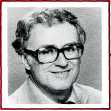 |
Home | Search | Browse | About IPO | Staff | Links |
 |
Home | Search | Browse | About IPO | Staff | Links |

Chicago By ED McMANUS Hello Columbus: Chicago's World Fair NINETEEN ninety-two seems a long way away, but Chicago thinks ahead. You have to when you want a World's Fair. In December, the city won tentative approval from the Bureau of International Expositions to hold a fair, and much of the planning is already underway. Chicagoans have talked about a fair for some time. There was an effort to do it as a celebration of America's bicentennial in 1976, but it never got off the ground. Then architect Harry Weese started talking about 1992 — that's the 5OOth anniversary of Christopher Columbus' discovery of America. By the summer of 1980, a private group of prominent citizens led by Thomas G. Ayers, retired chairman of Commonwealth Edison Co., had begun a feasibility study. Mayor Jane Byrne was willing to cooperate. Miami also wanted to hold a 1992 fair, but President Reagan agreed to give Chicago his endorsement. And ultimately, representatives of the city went before the Bureau of International Expositions. Without the bureau's approval, a fair would have a hard time attracting exhibitors from foreign countries. The bureau voted in favor of a plan to allow a fair in Paris in 1989 and fairs in both Chicago and Seville, Spain, in 1992, but that still must be ratified by the bureau's 35 member countries over the next several months. Some $1 billion in construction is to begin soon on the 500- to 600-acre site for the fair on the lakefront south of the Loop. The project includes the creation of a 180-acre man-made island adjacent to McCormick Place, the city's convention hall. It's going to be sort of a giant urban renewal project, among other things, because officials are hopeful that parking and support facilities will revitalize blighted areas near the site and that the project will create thousands of jobs. The lakefront also was the site of previous Chicago fairs — the 1893 Columbian Exposition which celebrated, a year late, the 400th anniversary of the discovery of America, and the 1933-34 Century of Progress Exposition. A 72-acre man-made island was built for the latter fair and is now the site of Meigs Airfield. The field is to be closed and the land incorporated into the 1992 fair under current plans. The fair will include a "boulevard of nations," an "avenue of industry," a "circumferential air train," a "synchroveyer transit line" and amusement park rides. Planners predict 54 million people will attend the fair during its six-month run. The fair authority, under current plans, will sell bonds to raise construction funds, and the bonds will be paid off after the fair, primarily from gate receipts. Corporation officials say the benefits of the fair will be tremendous. Retail sales will skyrocket, tax revenues will roll in, and unemployed people will be put to work. The hotel industry, in particular, will benefit. The life of some old hotels will be prolonged and the construction of new ones will be accelerated. And when it's all over with, the city will have a huge new lakefront park which could go a long way toward spurring nearby development on the near south side — something the city urgently needs. Assuming that it's successful, it will pay for itself. The revenue it generates will be more than enough to retire the bonds, according to officials. "The revenue part really isn't a problem unless it rained for 150 days or Lake Michigan rose 20 feet," corporation vice president Donald A. Petkus was quoted as saying. But there's a hitch. Out in the neighborhoods, many of which are crumbling, some people are grumbling. While the mayor and the big businessmen put all their attention to this glitzy happening on the lakefront, the rest of the city is falling apart, they say. The city's infrastructure — streets, bridges, sewers, transit lines and so forth — is deteriorating. Schools need upgrading. The police and fire departments could use more money. The mayor recently unveiled a plan for the city for the next 10 years. It is a strategy to make Chicago, by 1992, "an international city," Mrs. Byrne says. It includes $150 million worth of projects in the area of the fair site, including relocation of the northbound Outer Drive, widening of the Dan Ryan Expressway, a new spur from the Stevenson Expressway north to 18th Street and new sewer and water lines to the fairgrounds. But some leaders of community groups have their doubts. In Pilsen on the near south side, they say people will be displaced, and the Providence of God Church probably will be torn down as a result of the Dan Ryan work. Some small factories in that area may be torn down, too, and that will mean a loss of jobs for Pilsen residents. "When we asked the fair corporation and the city for information, we got absolutely nothing," said Arturo Vazquez, chairman of the Chicago 1992 Committee, a coalition of community groups concerned about the fair. "We neither approve or disapprove of a fair. We still don't know what it is. We want to know what it's going to cost the citizens of Chicago. There is no guarantee that the revenues are going to, in fact, pay off the bonds. "Our suspicion is that the fair is only camouflage for all the development plans for downtown." Maverick city council members hope to get some answers to the questions being raised by Vazquez' committee. One thing is clear: Chicago has a new controversy to keep it buzzing, and this one will probably last nine years!□ February 1983 | Illinois Issues | 36 |
|
|